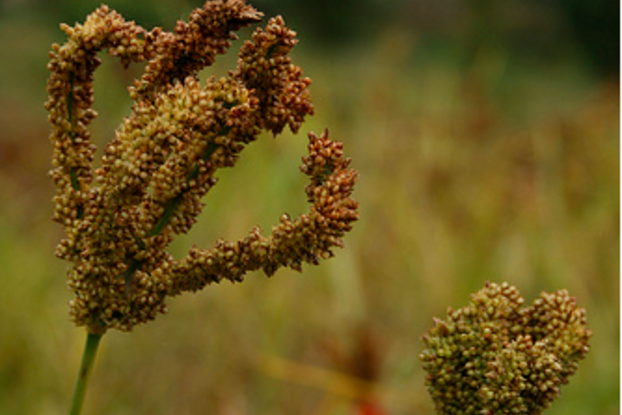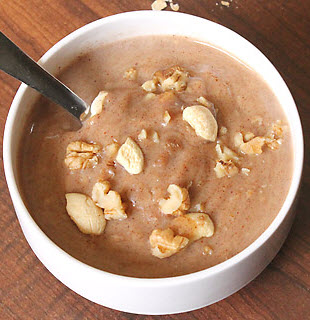Finger millet is a staple grain grown in more than 25 African and Asian countries, with Uganda, Nepal, China and India being the world’s leading producers. The small, deep red grain is a rich source of nutrients, including protein, fiber, iron, calcium, etc. It is also gluten free and low in fat that is mainly unsaturated. All these make it one of the healthiest millets in the world.

Health Benefits of Finger Millet
1. Control Diabetes
Eating finger millet regularly reduces the risk of diabetes due to its high dietary fiber and polyphenol content. Finger millet has more fiber than other grains such as wheat, maize and rice. The high fiber content slows down digestion, which keeps blood sugar levels down. It also has low glycemic index, making it ideal for snacking and protecting against blood sugar spikes.
2. Help in Weight Loss
Finger millet health benefits include weight management, which make it an important agent in various weight loss programs. The small grain contains large amounts of fiber and tryptophan; both reduce hunger pangs.
3. Reduce Cholesterol
Finger millet has cholesterol reduction properties, which make it an ideal food for a healthy heart and circulatory system. Finger millet contains three amino acids – lecithin, methionine and threonine which protect against the formation of plaque within blood vessels and deposition of excess fat in the liver, thereby protecting against hypertension, stroke and other circulatory problems.
4. Help Lactation
Besides the direct benefits to the consumer, finger millet benefits a nursing infant through the mother’s improved breast milk production. The vitamins, amino acids and minerals present in the grain benefit both the mother and her baby.
5. Aid in Relaxation
Antioxidants in finger millet such as tryptophan help to induce relaxation by eliminating free radicals within the bloodstream. Other finger millet health benefits arising from its antioxidant properties include relief from stress-related problems such as sleep disorders, depression, anxiety, headaches and migraines.
6. Increase Bone Strength
Finger millet is one of the richest plant sources of calcium. It also contains vitamin D. These qualities make it an important agent for development and maintenance of stronger bones. Children and older people should eat more finger millets. Some studies suggest that finger millet can help protect against osteoporosis.
7. Help Digestion
High fiber content in finger millet aids digestion and movement of food through the digestive system. This way, it cleanses the body and protects against constipation and other digestive problems.
8. Treat Anemia
Finger millet sprouts are rich in readily-absorbed iron that helps in blood formation and treatment of anemia. Vitamin C present in the sprouts helps in iron absorption. Regular helpings of meals containing the sprouts will help you access more finger millet health benefits so you can cut down on artificial iron supplements.
9. Have Anti-Microbial Properties
Besides the obvious benefits, finger millet has been found to have antibacterial properties. Tests have shown that it acts against several bacteria – salmonella spp. that causes a fever similar to typhoid, bacillus cereus that is associated with food poisoning, and staphylococcus aureus responsible for many soft tissue and skin diseases including cellulitis, abscesses and furuncles.
10. Have Anti-Cancer Potential
The rich antioxidant profile including flavonoids, tannins and phenolic acids has made finger millet an anti-cancer food. Antioxidants fight inflammation in the body which is believed to be one of the causes of cancer. Studies have found that regular consumers of the grain have a low incidence of esophageal cancer than those on grains such as maize and wheat.
11. Revert Skin Aging
The grain has anti-aging properties. By eating it regularly, you can have a smooth, youthful skin thanks to the amino acids such as lysine and methionine which help in the formation of collagen, thereby slowing appearance of wrinkles.
12. Lower the Risk of Gallstones
Fiber in finger millets helps protect against formation of gallstones by speeding elimination of waste from the digestive system. Studies have shown that regular consumers of foods rich in soluble and insoluble fiber have a 13 percent less risk of getting gallstones than those who don’t.
Note
- Excess consumption of finger millet is suspected to enhance production of excess oxalic acid in the body. Avoid it if you suffer from problems of kidney stones.
- A goitrogenic substance present in millet restricts absorption of iodine in the body, which may lead to thyroid problems including goiter. While goitrogens in most foods are reduced by cooking, the opposite is true for millet. If you have a thyroid problem, be careful about excessive consumption of millet.
How to Include Finger Millet in Diet
You can access finger millet health benefits by eating it in a variety of ways. The main methods of processing the grain are milling, popping, decorticating and fermenting. It is consumed in various forms including porridge, pancakes, pasta, noodles, soups, sweets, biscuits and cakes.
1. Finger Millet Porridge
 Ingredients
Ingredients
- Finger millet flour - 30g
- Water - 200ml
- Milk - 3 tbsp or buttermilk - 50ml
- Ghee - 1teaspoon
- Salt or jaggery to your taste
Directions
- Put the water into a pan and bring it to a boil.
- Add the salt or jaggery.
- Slowly add the flour, stirring the mixture to prevent it from forming lumps.
- Continue stirring and cook for 5 minutes.
- Add the milk before turning off the stove.
- Serve hot with the ghee, topping with walnuts or almonds.
2. Finger Millet Idli
Ingredients
- Finger millet flour - 2 cups
- Idli rice - 1 cup
- Fenugreek seeds - ½ tsp
- Whole black gram (skinned) - 1 cup
- Salt if needed
Preparation
- Clean the black grams and fenugreek seeds and soak for 4 hours.
- Clean and soak the rice in a separate container for 4 hours.
- Grind the black grams, adding little quantities of water to make a smooth, fluffy batter.
- Grind the rice, adding little quantities of water to make a coarse batter.
- Put the finger millet flour, salt and black gram batter into the rice paste to form a uniform semi-solid batter.
- Place the mixture in a large container and put it away to ferment for about 8 hours.
Directions
- Put water in a steamer and turn on the heat.
- Use a ladle to mix fermented batter to make it uniform; then pour into idli (cake) molds.
- Place the molds in the steamer and steam for about 15 minutes to cook. Use a toothpick to confirm it is cooked.
- Once it is cooked, sprinkle with some water and wait 2 to 3 minutes before removing the cake molds from the steamer.
- Serve the hot cake with chutney or sambar of your liking.
